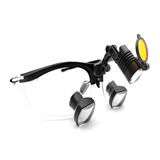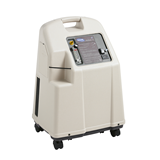Discover how to benchmark your clinic’s operating costs with up-to-date Australian insights. Learn practical strategies to improve profitability, manage expenses, and make smarter business decisions that keep your clinic competitive and sustainable.
Key takeaways
- Benchmarking gives you a clear view of how your clinic's costs stack up against industry norms, essential for profitability and long-term sustainability.
- Labour, rent, consumables, and equipment are key cost centres to track. Each can drastically impact your margins if not actively managed.
- Use sector-specific benchmarks such as the RACGP’s general practice cost reports, the ATO’s small business benchmarks, and state-based health audits.
- Technology investment and automation are reshaping baseline costs, adopting the right tools can improve cost-efficiency without sacrificing care.
- Benchmarking drives better decisions by turning your clinic’s financial data into clear actions around growth, staffing, pricing, and long-term planning.
- Different clinic types face different cost realities, so effective benchmarking must reflect your specific industry, funding model, and service profile.
- Common pitfalls include overlooking hidden costs (like software subscriptions or downtime), relying on outdated figures, and not adjusting for location-specific expenses.
- Practical actions include cost-per-appointment tracking, using clinic management software to audit operational efficiency, and engaging with professional advisory bodies.
How to benchmark your clinic’s operating costs
Running a clinic in Australia, whether it’s general practice, dental, physio, or allied health, comes with a complex web of costs. But how do you know if your costs are reasonable, or if you're overspending compared to other similar practices?
That’s where benchmarking comes in. Benchmarking your clinic’s operating costs means comparing your key financial metrics against industry averages or best-in-class performers. It's a critical step in boosting profitability, improving resource allocation, and preparing for growth or sale.
In a healthcare landscape shaped by funding pressures, workforce shortages, and rising patient expectations, cost transparency isn’t just good business, it’s survival.
Understand your major cost categories
To benchmark effectively, you first need to understand what you're spending, and where. Across Australian clinics, four categories tend to dominate operating costs:
1. Labour and wages
Labour is typically the biggest operating cost for any clinic. Labour typically accounts for 60–65% of total expenses in Australian clinics, including salaries, superannuation, payroll tax, workers’ comp, locum hires and training
Things to track:
- Salaries for clinical and admin staff
- Superannuation, payroll tax, and workers' comp
- Locum or casual staff hires
- Recruitment and training costs
2. Premises and rent
Rent or lease costs vary significantly by location. Rent for medical centres in inner Sydney typically sits between $700 and $1,000 per sqm, while regional leases can range from $350 to $600 per sqm, varying by precinct and building quality
Don’t forget:
- Outgoings (utilities, council rates)
- Cleaning and maintenance
- Security and compliance costs
3. Consumables and equipment
From tongue depressors to dermatoscopes, consumables and equipment costs creep up fast. The Therapeutic Goods Administration (TGA) compliance standards also require many items to be of a certain grade, meaning cheaper options may not be viable.
Common inclusions:
- PPE, single-use items
- Diagnostic equipment
- Sterilisation and infection control supplies
- Minor surgical tools or diagnostic software licences
4. Technology and software
Cloud-based clinical systems, telehealth tools, appointment booking software, and data storage are becoming core cost categories.
Example:
- Practice management software like Best Practice or MedicalDirector can cost $200–$800 per month, depending on size and add-ons.
Benchmarks by clinic type: how costs vary across the industry
Benchmarking looks different depending on your clinic’s discipline. Here’s how key metrics typically compare across different healthcare sectors in Australia:
General practice (GP)
- Operating margin: 8–15%
- Staff costs: 60–70% of total expenses
- Bulk billing rate (2025): 77.4% (Jul ’24–Mar ’25)
- Key pressure points: Medicare rebate freezes, workforce shortages
Dental clinics
- Operating margin: 20–35%
- Chair occupancy rate: 75–85%
- Consumables per appointment: $15–$30
- Key pressure points: Equipment costs, patient demand for technology
Physiotherapy & allied health
- Operating margin: 15–25%
- Staff utilisation (billable time): 75–85%
- No-show rate target: <5%
- Key pressure points: NDIS pricing, admin time, staffing flexibility
Specialist clinics
- Operating margin: 20–40%
- Equipment ROI horizon: 3–5 years
- Admin staff ratio: 1.5–2.5 per specialist
- Key pressure points: High-tech investment, MBS item limitations
Day surgery & procedural clinics
- Consumables share of costs: 25–35%
- Theatre utilisation: 70–90%
- Recovery capacity: key cost lever
- Key pressure points: Compliance, anaesthetic staff availability
Find the right benchmarks for your practice type
Not all clinics are created equal. A 5-chair dental clinic in the Sydney CBD will have vastly different overheads than a sole physiotherapist in Dubbo.
When benchmarking, it’s important to find data sources that reflect your setting:
Where to find credible benchmarks
- RACGP benchmarking tools (Health of the Nation reports, practice profitability data)
- Australian Taxation Office small business benchmarks – e.g., medical centres: average cost of sales to turnover ratio
- HBF or Medibank provider fee schedules – helpful for understanding how revenue relates to cost
- IBISWorld industry reports – comprehensive, often used by investors and lenders
- Local Primary Health Networks (PHNs) – especially for regional practices
Tip: Look for benchmarks by region, modality (GP vs. physio vs. dental), and size.
Measure your own costs clearly
Once you know what to compare to, the next step is making sure your own figures are accurate. Many clinics under-report costs simply because they don’t track them in a granular way.
Suggested internal KPIs to track:
- Cost per appointment
- Staff-to-patient ratio
- Operating cost as a % of billings
- Occupancy cost as a % of revenue
- Consumables cost per treatment
Use tools like:
- Xero or MYOB for financial tracking
- Cubiko or Doctors Control Panel for practice metrics
- Spreadsheet trackers for comparing months/quarters
Factor in regional and compliance differences
A key mistake in benchmarking is assuming all costs are equal nationwide. In reality, local variables can seriously distort your figures if not adjusted for.
Examples:
- Rural clinics often pay more for supply deliveries and face higher recruitment costs
- Metro clinics pay more in rent and staff wages, but may benefit from greater patient density
- State-level compliance (e.g., Victorian OH&S vs. WA guidelines) can affect what equipment and processes you must maintain
Always account for:
- Medicare Bulk Billing indexation and state health funding
- Changes in industrial awards or Fair Work rulings
- New TGA or AHPRA compliance directives
How benchmarking supports business decisions
Benchmarking goes beyond cost control, it’s a strategic tool for making confident, informed decisions about your clinic’s future.
Grow with clarity
Thinking of expanding? Benchmarking shows if your margins and cost-per-appointment can support growth, or if efficiency needs work first.
Optimise staffing
Compare your labour costs and productivity to industry norms. This helps you adjust rosters, reduce admin inefficiencies, and plan hires more effectively.
Set sustainable pricing
If your costs are rising but your fees haven’t changed, benchmarking helps you justify price adjustments and protect profitability, especially in private-billing clinics.
Boost valuation
Whether you're preparing to sell or attract investment, well-benchmarked financials show buyers your clinic is stable, efficient, and low-risk, often resulting in a higher sale price.
Case scenario: Two physio clinics, two very different margins
Let’s compare two hypothetical physiotherapy clinics to illustrate how location and operating costs can impact profitability:
Clinic A is located in the heart of Newcastle’s CBD. It sees around 220 patients per week, but its annual rent is $90,000, and staff wages total $220,000. Despite the high patient volume, its operating margin sits at just 12% due to elevated overheads tied to its central location.
On the other hand, Clinic B operates in regional Victoria and sees 120 patients weekly. Its annual rent is significantly lower at $35,000, and staff wages are $110,000. Even with fewer patients, Clinic B maintains a healthier operating margin of 18%, thanks to its lower fixed costs.
This comparison highlights that higher revenue doesn’t always mean better margins, without benchmarking, Clinic A might assume it’s performing well, when in fact, its cost structure could be improved. Even though Clinic A bills more overall, its higher rent and staff costs compress its profit margin. Without benchmarking, Clinic A might think it’s performing well, when in reality, its costs are off balance for its revenue profile.
Identify and manage outliers
Benchmarking isn’t just about averages. It’s also about outliers, unexpected costs that don’t match industry norms.
Common red flags:
- High admin wages without improved billing throughput
- Software subscriptions that overlap in function
- Excessive equipment lease fees compared to purchasing costs
- Inventory waste or stock-outs
How to resolve:
- Do a quarterly cost audit by category
- Talk to other clinic owners or join benchmarking groups
- Use dashboards to visualise cost spikes over time
Embrace automation and efficiency tools
Labour and time-intensive tasks are a major driver of inefficiency in clinics. In 2024, clinics adopting automation for front desk tasks reported up to 25% reduction in admin costs, according to a McKinsey Australia digital health briefing. Digital-health and AI solutions can deliver significant administrative cost savings, McKinsey estimates they reduce admin expenses by 15–20% in healthcare settings.
Tools to consider:
- Automated recalls and appointment reminders
- Online payments and invoicing
- AI-powered documentation or dictation tools
- Digital stock tracking and low-inventory alerts
These can bring your operating costs below benchmark, without cutting quality.
Use benchmarking as a springboard, not a finish line
Benchmarking doesn’t end with finding your numbers. Use the data to actively improve your clinic operations:
Practical actions:
- Negotiate supplier contracts using average market rates
- Re-forecast staffing levels based on seasonal patient flow
- Adopt a lean operations mindset, test and improve small processes regularly
- Plan for reinvestment: if you’re well below average costs, put the savings into growth or tech upgrades
FAQs: benchmarking your clinic's operating costs
What is the ideal operating margin for a clinic in Australia?
While it varies, most profitable clinics aim for a 10–25% operating margin. Allied health and dental often sit higher due to private billing.
How often should I benchmark my clinic costs?
Aim for a full benchmark review at least annually, with quarterly mini-reviews to catch any outliers early.
What’s the most overlooked cost in clinics?
Software creep, the gradual build-up of overlapping SaaS subscriptions, is a common blind spot.
Can benchmarking help with valuation or sale?
Absolutely. Clinics with detailed cost benchmarks and clear KPIs often sell faster and for higher multiples, especially in private equity rollups or corporate takeovers.
Final thoughts
Benchmarking your clinic’s operating costs isn’t just an accounting exercise, it’s a strategic tool for smarter growth, better margins, and a more resilient healthcare business. In a market where rising costs and compliance pressures continue to squeeze margins, knowledge is your biggest asset.
Start by understanding your own numbers. Compare meaningfully. And act on what the data tells you. That’s how smart clinics stay competitive, profitable, and ready for whatever comes next.







-160x160-state_article-rel-cat.png)











%20(1)-160x160-state_article-rel-cat.png)




